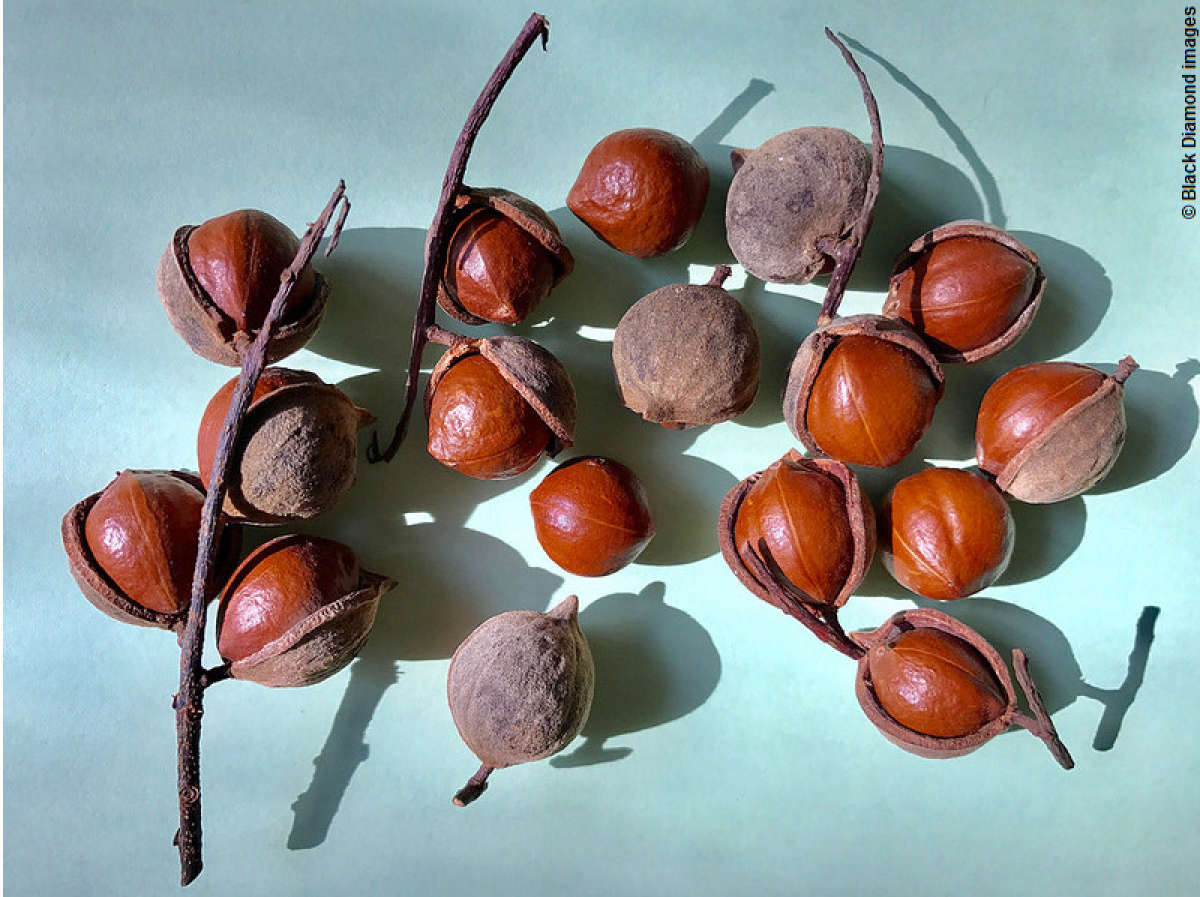Macadamia Conservation Trust (MCT) is proud to announce that on the 11 September 2018, Keith Sarnadsky discovered a new population of Macadamia jansenii.
Fondly known as “Mj”, the world’s smallest, most delicate and rarest macadamia was only recognised by the modern scientific community in 1992 and appeared to survive in only a single tiny population. There had been reports of macadamia-like trees between Bundaberg and Gladstone for years, but none had been reliably located until 1982, when “bush botanists” Ray Jansen, Keith Sarnadsky, Eric Zillman and Jim Randall found some interesting trees nestled in a patch of rainforest along a rocky creek south of Miriam Vale. It took another decade for the scientific community to agree that this was indeed a new species and name it Macadamia jansenii in honour of Ray Jansen.
All the other macadamias have over-lapping distributions, but Macadamia jansenii grows nearly 200km north of its nearest relative, Macadamia integrifolia. How has it survived in this small rainforest gully surrounded by drier forests, and does it have characteristics that might make it more resilient to climate change than its southern relatives?
There are grave concerns that a fierce wildfire or weed invasion could wipe out the entire species, so MCT has been applying for funding to protect the existing trees and to seek out additional populations. Our most recent project, Securing the future of Australia’s most endangered macadamia speciesis made possible through funding from FAME – the Foundation for Australia’s Most Endangered Species.
“FAME is an excellent partner for MCT because they listened to the expert advice from our Conservation Committee and provided funds for the four pillars of our Macadamia janseniirecovery strategy” explained Denise Bond, MCT Executive Officer.
“FAME is supporting targeted searches for new populations, a ten-year census of the original population, reintroducing trees into the wild, and establishing two additional insurance populations. This complements our existing Mj project, funded by the Threatened Species Recovery Program, which provides for the establishment of four insurance populations at Botanic Gardens along the East Coast of Australia.
MCT has commissioned Keith Sarnadsky to search for new populations. He set about the task with characteristic thoroughness, combining his knowledge of the preferred habitat of Macadamia janseniiand the vegetation in Bulburin National Park with detailed mapping available from Queensland Globe. On his very first expedition for this project, he found a small new population of at least 10 plants, from seedlings to mature trees, about 5 km from the current population. This is a very exciting find, and on a return visit with Ray Johnson, they counted 37 healthy trees and found two more smaller populations in a neighbouring gully.
These trees are probably too far from the original population for cross-fertilisation, unless some “stepping stone” trees are found, however it is possible that flood waters may carry nuts from the new populations to the old. “This discovery raises as many questions as it answers and we look forward to working with researchers to see how it can expand our knowledge of this little understood species” said Denise. MCT is currently applying for a permit to collect samples for DNA analysis, and this should show the degree of relatedness between the populations.
Keith and Ray have now also explored similar habitat at the head of the Boyne River without finding any Macadamia jansenii, so it still appears that the species is restricted to a single creek catchment and remains a high priority for conservation.
“Bush botanists” like Keith put many volunteer hours into exploring and getting to know our native flora and fauna. Finding these populations is testament to their observational skills, enthusiasm and many hours of trekking through challenging terrain.
